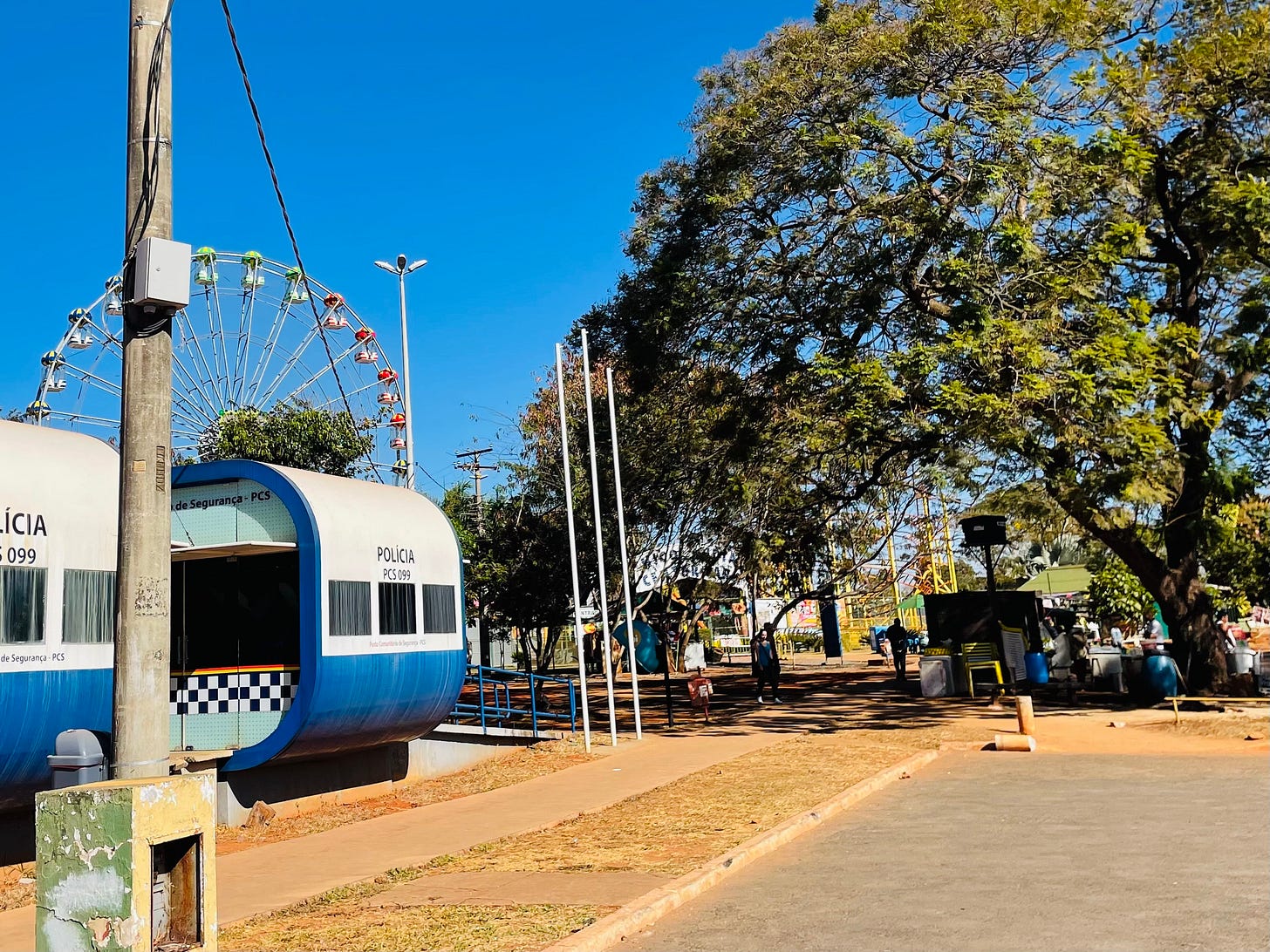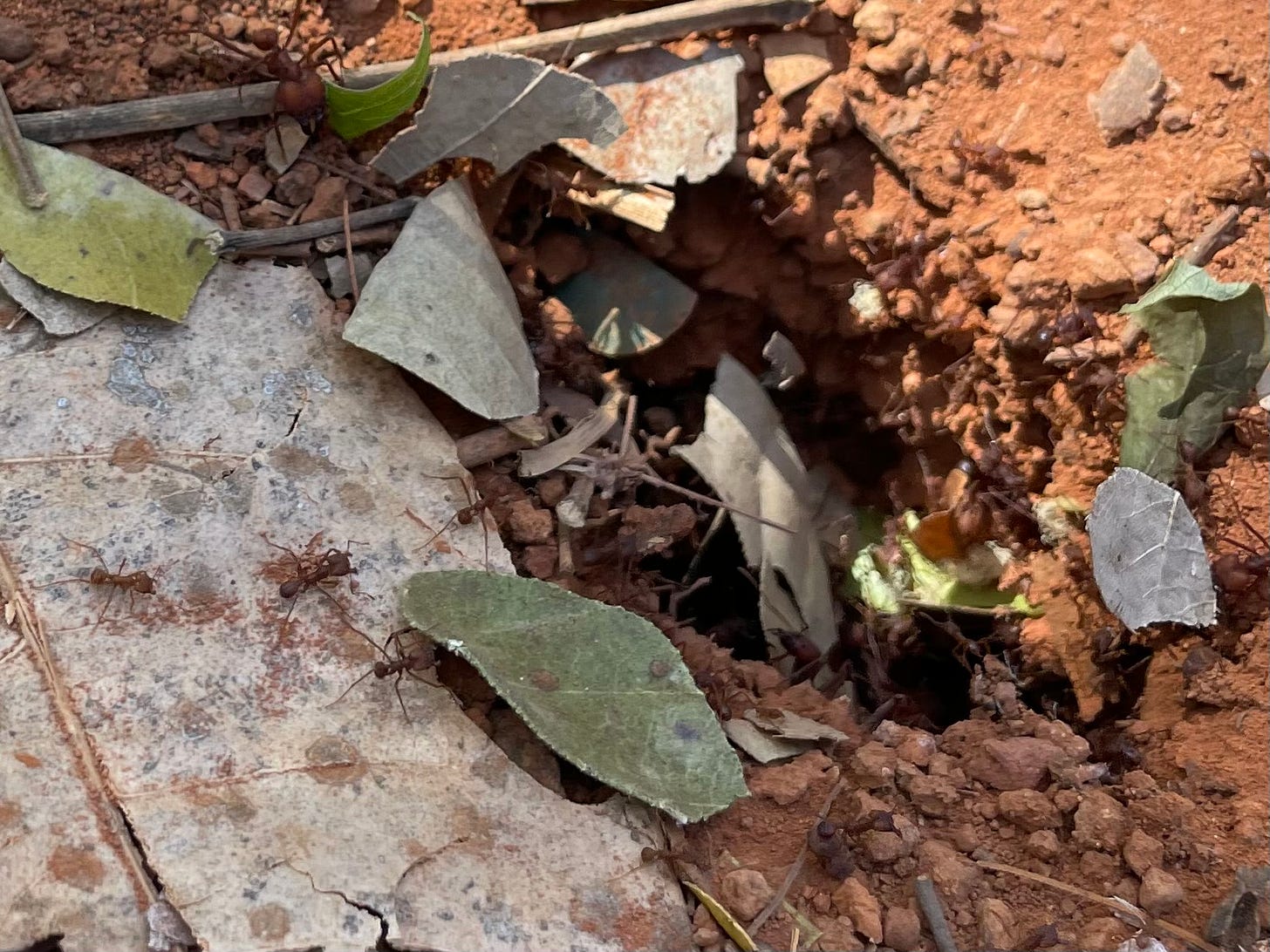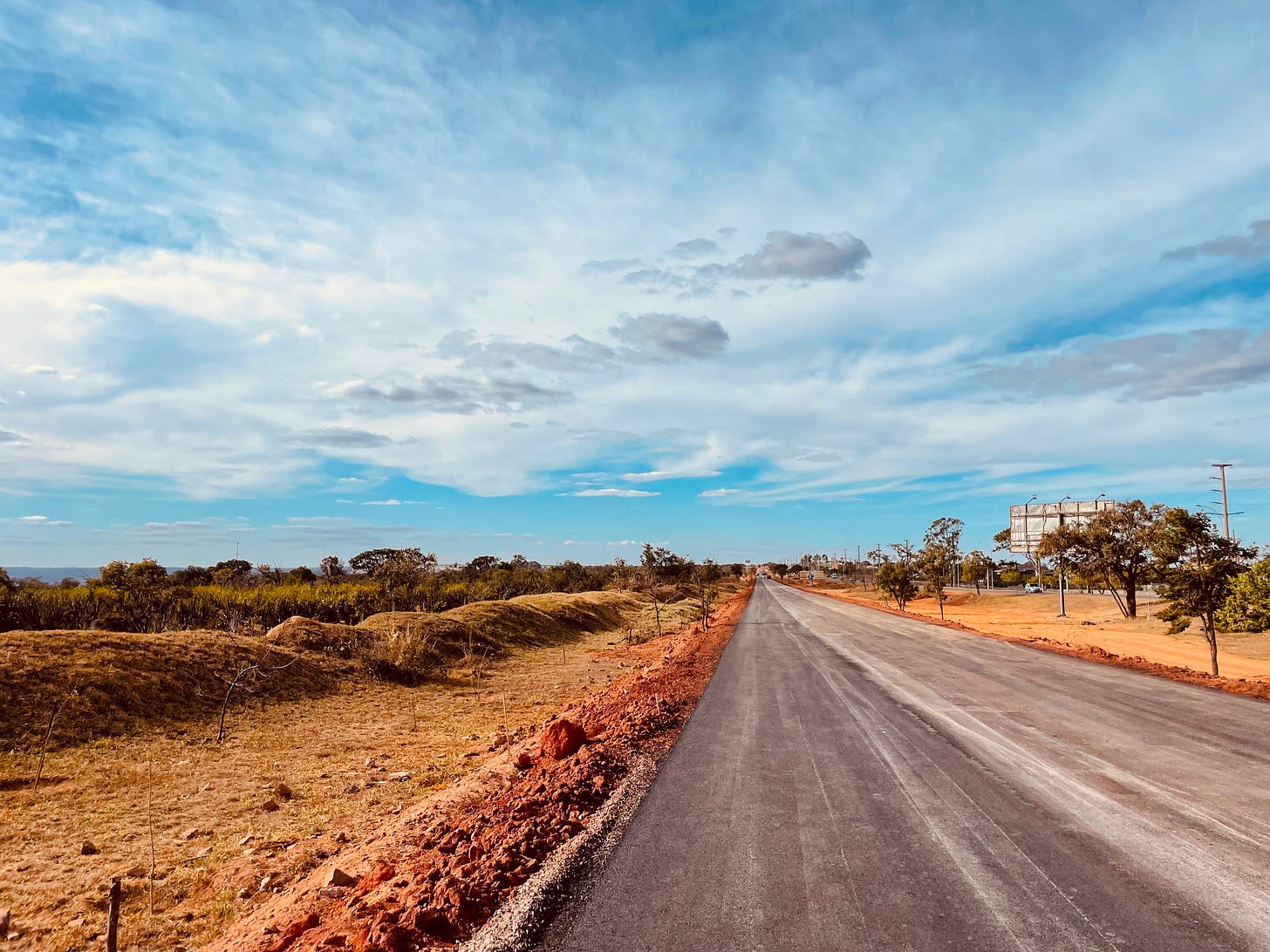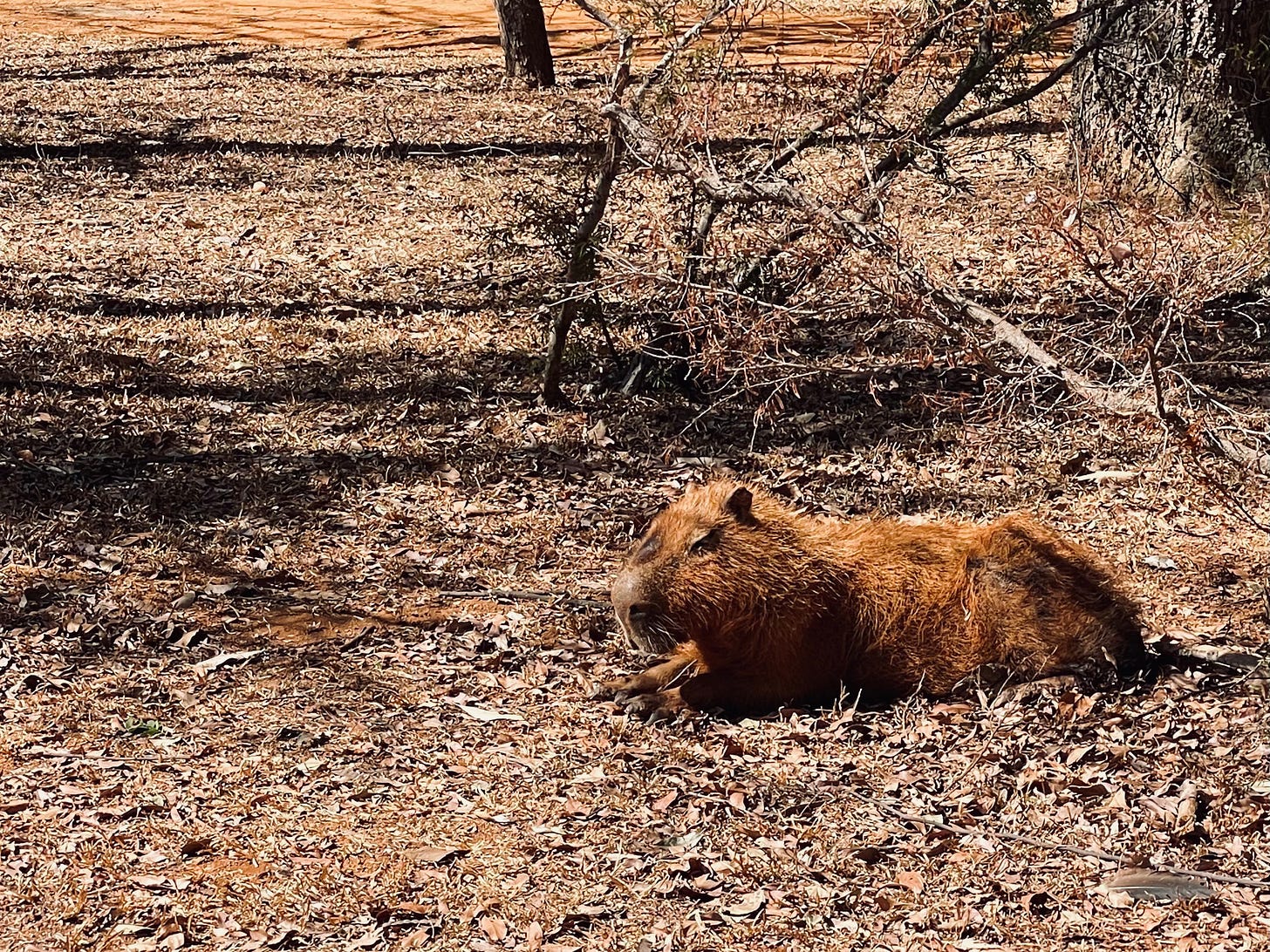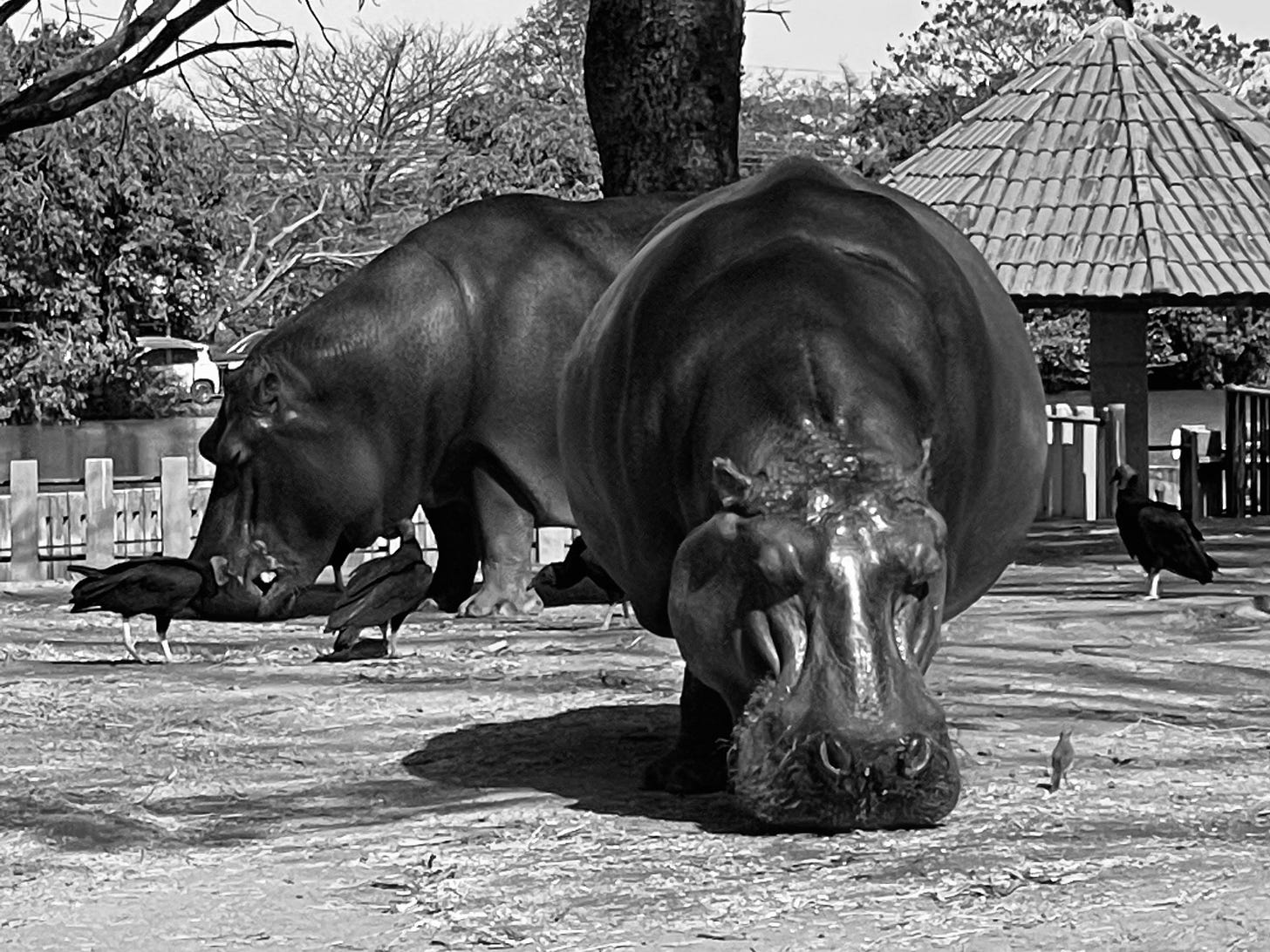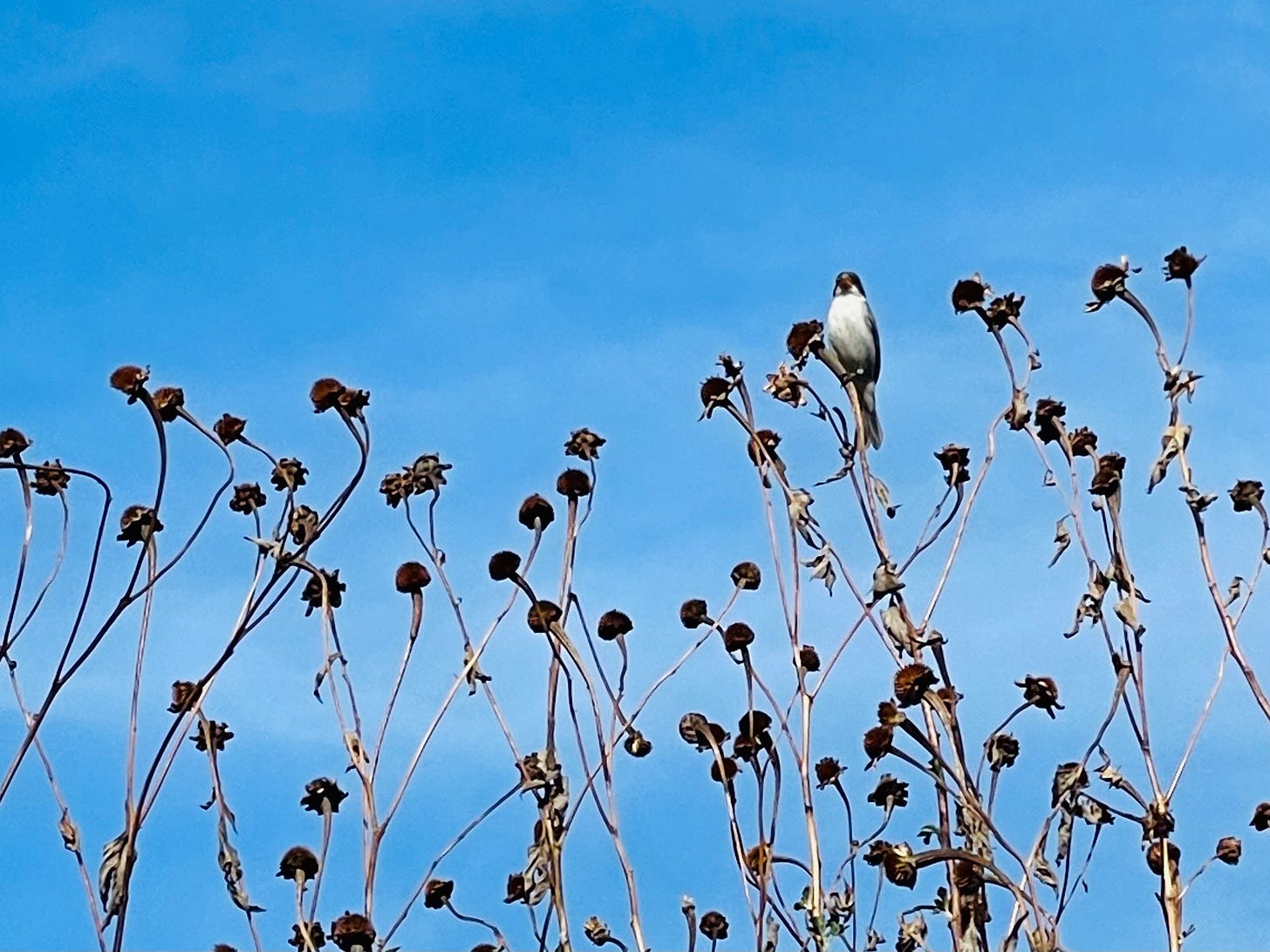It’s been more than three years since I took a big international trip. In many ways I’d forgotten how to do so - during the pandemic I’ve mostly traveled to places in the United States not too dissimilar from where I live. Writing now from Brasilia, I realized part of me had forgotten what it was like to go somewhere less familiar.
It’s enlivening to be in South America. In many ways I’m a different person since I was here last time five years ago. I have different eyes now.
One of the ways my eyes have changed is I am much more aware of Christopher Alexander’s living systems. Brasilia in many ways is Christopher Alexander’s nightmare - a planned city created from scratch in 1960. Abstract modernist pipe-dreams shaped in concrete. It’s the antithesis of Alexander’s vision for generative cities. When you read about where to go in Brasilia it’s often the modernist buildings that make the list: the cathedral, the government buildings, the modernist promenade… These spots are mostly absent of life.
But there is a trick I use to enjoy Brasilia: I look for the corners of life in between.
LIFE IN THE SPACES IN BETWEEN
One of the challenges that Brasilia presents it that it was designed as a planned city. This means that much of the city is not allowed to change. The plan is the plan. The main part of the city is called the “plano piloto” (“pilot plan”) and it’s arranged in the shape of a giant airplane as viewed from the sky. The city blocks are numbered logically and it’s all a very rational, modernist arrangement of homes, offices, stores and government buildings. This layout was set in the 60s. It’s fixed in stone.
Alexander’s view of a living city is that you can only build one through gradual improvements over time. Downtown Brasilia is an example of stasis: if over time the people of Brasilia decided that the downtown doesn’t make sense, it’s basically impossible to change. If they want to tear down blocks, re-arrange them - impossible. This makes it hard for much of it to become more alive. As such, Brasilia’s growth is mostly in its suburbs - satellite cities and condominiums on the periphery. The core though hasn’t changed much in over fifty years.
However, even in the main center of Brasilia, there are pockets full of life.
Below is a photograph of a modernist police station in the main city park. The park was designed in the main modernist plan. It’s part of the city planner’s original dream and most of it just the way it was decades ago, and as such, a lot of it lacks life.
However, next to the blue and white modernist concrete police capsules, is a beautiful tree under whose shade, brims life: a number of people have set up stands to sell coconuts, put up little plastic tables and serve lunch, cane sugar drinks, snacks, beer… There is also a masseuse that set up a tent for impromptu massages for the runners and bikers that pass by. That little set up, is recreated throughout the park: little pockets of life that make the park enjoyable. The modernist skeleton remains but in the spaces without enforced rules, you have life.
You can see this also in the daily rhythms of Brasilia’s citizens - life happens in private homes and private spaces that are encumbered by rules. Food & family - often combined - generate happiness and fulfillment. Spend time in the kitchens, sampling the pão de queijo, the fruits, the feijoada - ingredients, dishes and meals full of history and local character - full of life.
FLORA & FAUNA - LAND & SKIES
So much of travel is finding positive wherever you are. You have a choice when traveling: you can choose the path of complaining (there is always something you wish was different; something that is better at home) or you can choose the path of gratitude, wonder, adventure and appreciation. One of the clearest and most obvious things to be grateful for in Brasilia is its nature; one of the consequences of Brasilia being a planned city in the middle of nowhere, is that it’s actually surrounded by wilderness.
The birds, plants and fauna of Brasilia are extraordinary. If you really look, there are beautiful, interesting (and sometimes dangerous) things everywhere you look.
Take the most most dry, modernist landscape. If you pause and look down, you might see little leaves scurrying around. When you look closer you see that it’s giant ants carrying those leaves – endless supply chains move into the horizon. These are enormous, formidable ants with huge, red mandibles. If these ants ever met the ants of the Bay Area, they would completely destroy them.
If instead of looking down you look up, you might see the most beautiful skies. The soil of Brasilia is red and flat. The red horizon combined with the azure and the enormity of the tropical clouds, can be otherworldly.
Zoology, geology and botany also let you enjoy every walk. In the most nondescript suburbs live the most amazing animals - parrots and macaws fly overhead, monkeys sometimes visit for afternoon coffee or steal snacks at parks, little owls can sometimes be found standing outside your house.
There are also capybara spread through the city. They look like giant, cute pigs. They also swim, so sometimes you’ll see them on little islands. Their droppings look like enormous mice poo. Apparently capybara are now everywhere in Brasilia as suburban sprawl pushed out their natural predators (pumas and some form of local wolf).
They also say the capybara carry ticks that are dangerous and can give you some form of bad fever so you shouldn’t get too close… Brazil is similar to Australia in this way - it’s full of things that could kill you. These facts are often told nonchalantly in passing and only if you ask follow-up questions.
If you go to the zoo, the African animals are the happiest ones I’ve ever seen outside of Africa. This zoo is by no means fancy (it hasn’t been fixed up much since the 1960s or so and it’s $1 entry per person!) but the hippos looked amazing. Perhaps it’s because Brasilia is the same latitude as the African savanna… Perhaps it’s because they like the vibes… Whatever the reason, the animals here look fantastic.
I forgot how much I love to travel. It reminds me how large and varied the world is. It reminds me that my concerns are so narrow: different countries have their own daily dramas, their own political issues, their own worries and aspirations… It’s wonderful to be outside of my comfort zone and remember how little of the world I actually experience.
If you’re reading this in the United States, now is a fantastic time to travel. The dollar is very strong, COVID restrictions are not that problematic, and you won’t be battling other tourists (by some estimates there are 80% less tourists in Brazil now than a few years ago!). Similar to Tyler Cowen, I highly recommend buying some tickets and getting on a plane.
The world is beautiful and ready for visitors. Life awaits.




